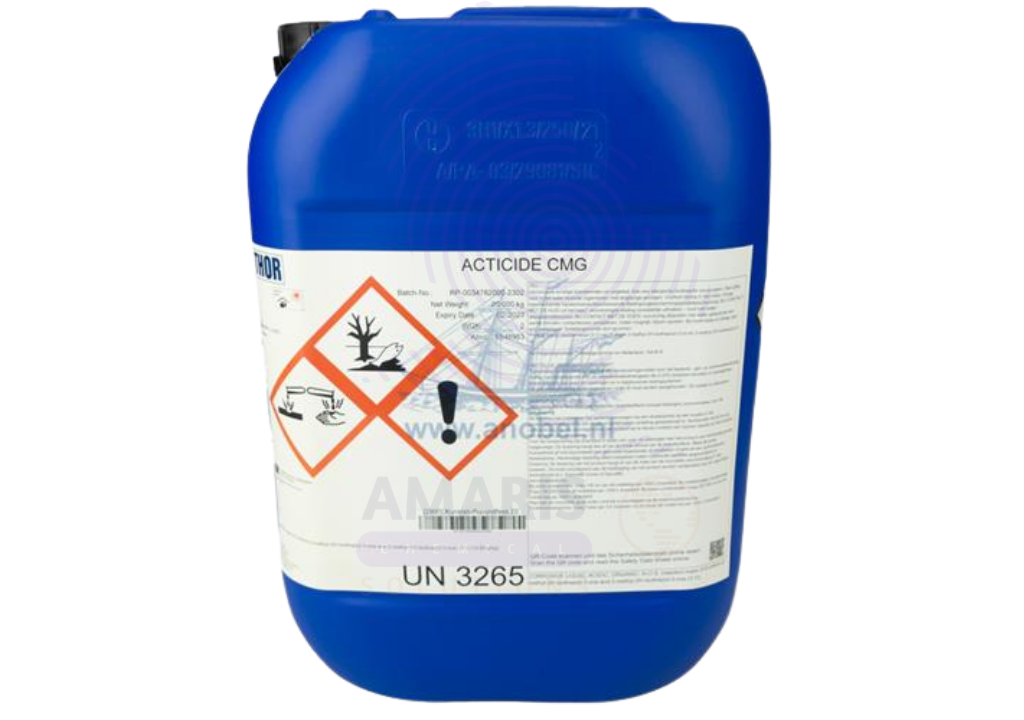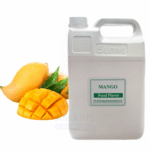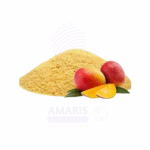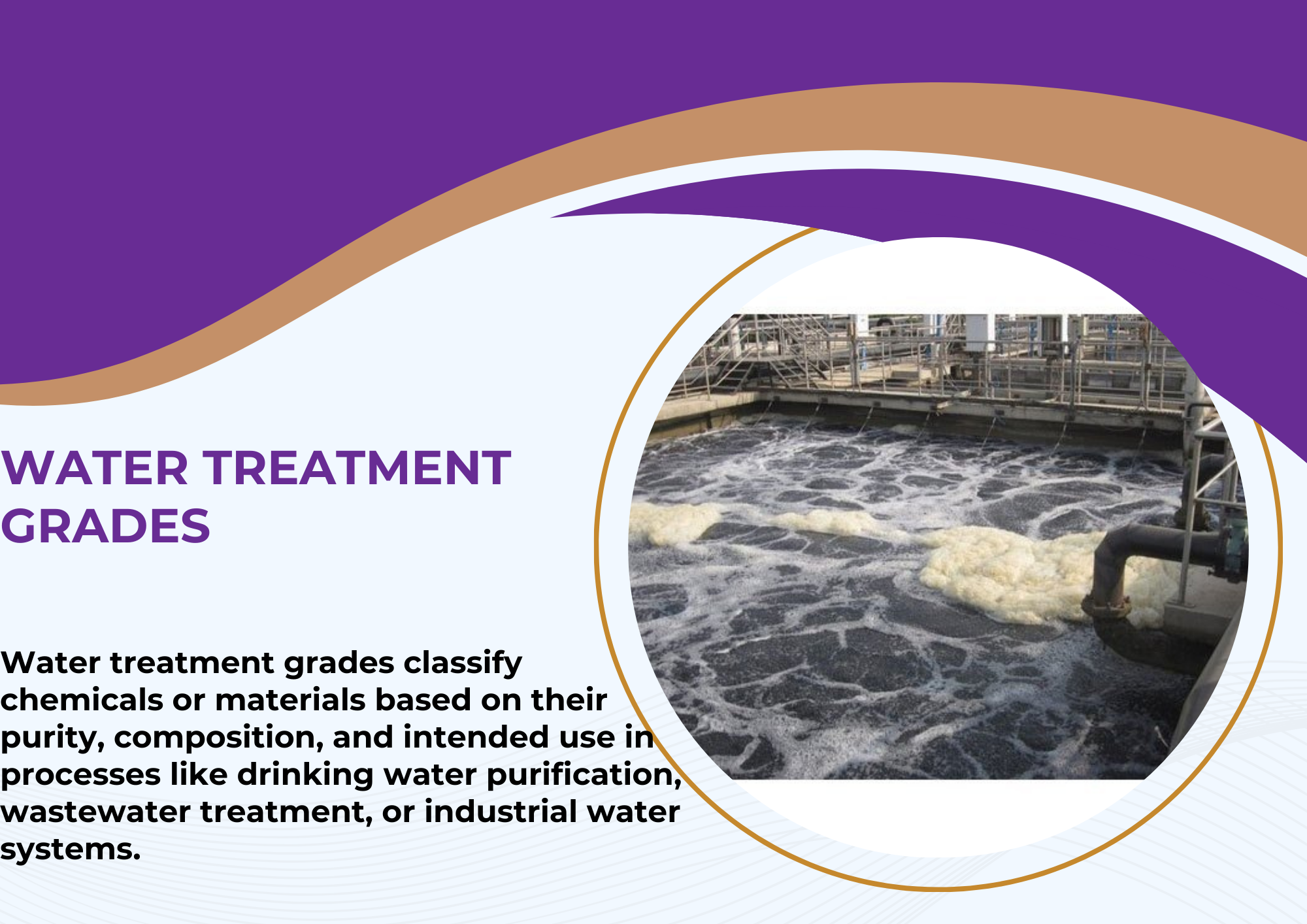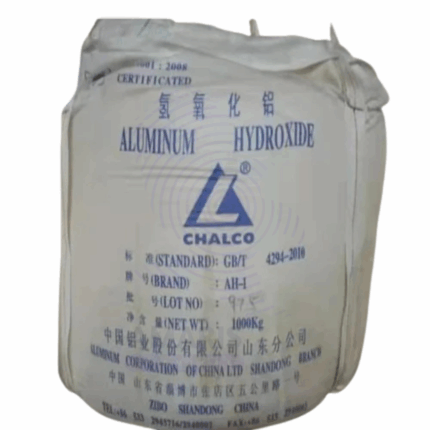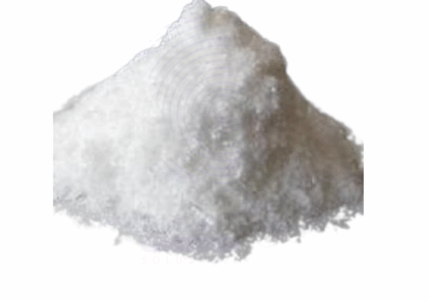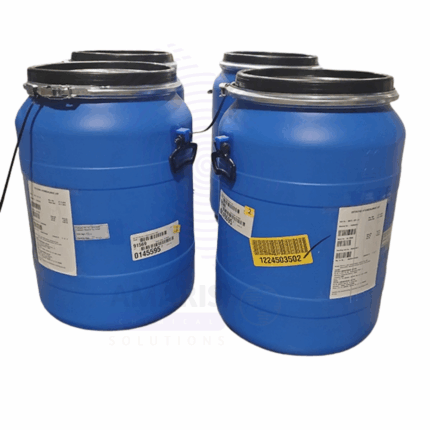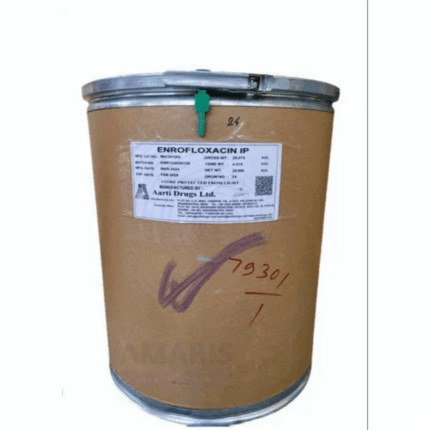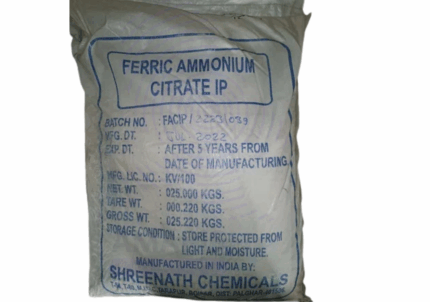Acticide
Whatsapp Order
Acticide is a brand name for a range of biocides and preservatives used primarily in industrial and commercial products to prevent the growth of bacteria, fungi, algae, and other microorganisms. It is commonly added to paints, coatings, adhesives, plastics, and personal care products to extend their shelf life and maintain product quality.
Description
Table of Contents
Toggle
Acticide
Primary Uses
- Water Treatment & Cooling Systems
- Prevents biofilm formation in cooling towers, pipelines, and industrial water systems.
- Controls Legionella, Pseudomonas, and other harmful bacteria.
- Paints & Coatings
- Used as a in-can preservative to extend shelf life of water-based paints, adhesives, and emulsions.
- Prevents fungal/algal growth in wet-state paints and dry film coatings.
- Personal Care & Cosmetics
- Preserves shampoos, lotions, creams against microbial contamination (e.g., Acticide® MBS).
- Extends product lifespan without affecting fragrance or texture.
- Leather & Textile Industry
- Prevents mold and bacterial degradation in wet leather processing and stored textiles.
- Fuel & Lubricant Preservation
- Used in diesel, biofuels, and metalworking fluids to inhibit microbial spoilage.
Secondary Uses
- Pulp & Paper Industry
- Controls slime-forming bacteria in paper mills.
- Agriculture
- Preserves liquid fertilizers and pesticide formulations.
- HVAC Systems
- Disinfects air washers and humidifiers.
- Household Cleaners
- Added to detergents for antimicrobial action.
KEY PRODUCT FEATURES
1. Basic Identification Attributes
- Chemical Name:
- For Acticide MBS: Blend of 2-Methylisothiazol-3(2H)-one (MIT) and 1,2-Benzisothiazol-3(2H)-one (BIT)
- For Acticide SPX: Polyhexamethylene biguanide hydrochloride (PHMB)
- Common/Trade Names:
- Acticide MBS
- Acticide SPX
- Acticide EPW (varies by specific product)
- CAS Numbers:
- MIT: [2682-20-4]
- BIT: [2634-33-5]
- PHMB: [32289-58-0]
- HS Code: 3808.94.90 (other biocides)
- Molecular Formula:
- MIT: C₄H₅NOS
- BIT: C₇H₅NOS
- PHMB: (C₈H₁₇N₅)ₙ·HCl
- Synonyms:
- Isothiazolinone blend
- PHMB solution
- Microbiocide
2. Physical & Chemical Properties (for Acticide MBS typical formulation)
- Physical State: Clear to slightly yellow liquid
- Color & Odor: Pale yellow; mild characteristic odor
- Melting Point: <-20°C
- Boiling Point: ~100°C (water base)
- Density: 1.02-1.08 g/cm³ at 20°C
- Solubility:
- Water: Fully miscible
- Organic solvents: Partially soluble
- pH Level: 2.5-5.0 (acidic)
- Vapor Pressure: ~23 hPa at 20°C (water dominated)
- Flash Point: >100°C (non-flammable)
- Active Content: 1.5-50% (varies by product)
3. Safety & Hazard Attributes
- Hazard Class (GHS):
- Skin Corrosion/Irritation (Category 1B)
- Eye Damage (Category 1)
- Acute Toxicity (Oral, Category 4)
- Hazardous to Aquatic Life (Chronic 1)
- NFPA Ratings:
- Health: 2
- Flammability: 0
- Reactivity: 0
- Exposure Limits:
- MIT/BIT: 0.5 mg/m³ (8h TWA)
- PHMB: 1 mg/m³ (total dust)
- Reactivity:
- Incompatible with strong oxidizers
- Avoid alkaline conditions (pH >9)
4. Storage & Handling Attributes
- Storage Conditions:
- 5-30°C in original container
- Protect from freezing
- Keep tightly closed
- Incompatible Materials:
- Strong bases
- Reducing agents
- Container Type:
- HDPE or stainless steel
- Avoid carbon steel
- Shelf Life: 12-24 months unopened
- Special Handling:
- Chemical-resistant gloves (nitrile)
- Face shield
- Fume hood for large volumes
5. Regulatory & Compliance Attributes
- Regulatory Status:
- EPA Registered (USA)
- BPR Approved (EU)
- K-BPR (Korea)
- Hazard Symbols (GHS):
- Corrosion
- Aquatic toxicity
- Exclamation mark
- Transportation Restrictions:
- UN number: 3082 (for some formulations)
- Packing Group: III
- Waste Disposal:
- Licensed hazardous waste facility
- Never dispose to drains
6. Environmental & Health Impact
- Ecotoxicity:
- LC50 (fish): 0.1-10 mg/L
- EC50 (daphnia): 0.01-1 mg/L
- Persistence:
- MIT/BIT: 10-30 days half-life in water
- PHMB: 5-15 days half-life
- Carcinogenicity:
- Not classified (IARC/NTP)
- Biodegradability:
- MIT/BIT: <20% in 28 days
- PHMB: <10% in 28 days
SAFETY HANDLING PRECAUTIONS
Safety Handling Precautions
Personal Protective Equipment (PPE):
- Gloves: Nitrile or neoprene (check compatibility with specific formulation)
- Eye Protection: Chemical splash goggles + face shield
- Respiratory: NIOSH-approved N95 (for dust) or organic vapor respirator (for aerosols)
- Body: Chemical-resistant coveralls + impermeable apron
Handling & Storage:
- Use in well-ventilated areas or under fume hoods
- Ground and bond containers to prevent static discharge
- Store in original, labeled containers away from heat, sunlight, and incompatible chemicals (e.g., strong oxidizers, acids)
- Keep at 15–25°C (avoid freezing or extreme heat)
Hygiene & Work Practices:
- No eating, drinking, or smoking in handling areas
- Wash hands thoroughly after use
- Emergency eyewash/shower stations must be accessible
First Aid Measures
Skin Contact:
- Remove contaminated clothing immediately
- Wash with soap and lukewarm water for ≥15 minutes
- Seek medical attention if irritation or burns develop
Eye Contact:
- Rinse eyes continuously with water for ≥20 minutes (hold eyelids open)
- Seek immediate medical attention (risk of corneal damage)
Inhalation:
- Move to fresh air immediately
- Administer oxygen if breathing is difficult
- Call poison control or emergency services if symptoms persist
Ingestion:
- Do NOT induce vomiting
- Rinse mouth with water
- Seek emergency medical care
Firefighting Measures
Fire Hazards:
- Combustible (depending on formulation)
- May release toxic fumes (HCl, CO, NOx, formaldehyde) when heated
Extinguishing Media:
✔ Alcohol-resistant foam
✔ CO₂
✔ Dry chemical powder
✖ Avoid water jets (may spread burning liquid)
Firefighting Protocol:
- Wear SCBA (self-contained breathing apparatus) + full protective gear
- Cool nearby containers with water spray
- Contain runoff to prevent environmental contamination
Spill & Leak Management
Small Spills (<1L):
- Wear full PPE
- Absorb with inert material (vermiculite, sand, or spill pads)
- Place in sealed hazardous waste container
Large Spills (>1L):
- Evacuate area
- Contain spill with barriers (clay, sandbags)
- Prevent entry into drains or waterways
- Call HAZMAT team if necessary
Disposal:
- Treat as hazardous waste (follow local regulations)
- Do not pour down drains
Related products
Aluminum hydroxide
Aluminum Hydroxide, chemically known as Al(OH)₃, is a white, odorless, and odorless powder or gelatinous substance. It is widely used in pharmaceuticals as an antacid to neutralize stomach acid and relieve indigestion and heartburn. Beyond healthcare, aluminum hydroxide is a crucial component in water purification, fire retardants, and as a precursor or filler in various industrial applications. It functions as a flame retardant by releasing water upon heating, thus cooling the material and diluting flammable gases. Due to its amphoteric nature, it can react both as an acid and base, enhancing its versatility. Aluminum hydroxide is often utilized in manufacturing aluminum salts and in producing aluminum oxide.
Calcium Chloride
Calcium Chloride is an inorganic salt composed of calcium and chlorine with the chemical formula CaCl₂. It typically appears as a white crystalline solid or granular powder, highly soluble in water and exhibiting strong hygroscopic properties. Calcium Chloride is widely used for its moisture-absorbing ability, de-icing, dust control, and as a firming agent in food processing. It finds extensive applications across industrial, pharmaceutical, agricultural, and food sectors due to its efficacy in modifying physical and chemical properties of products and environments.
Carbocisteine AJI 92
Carbocisteine AJI 92 is a high-purity pharmaceutical-grade amino acid derivative, chemically known as S-carboxymethyl-L-cysteine. It is a white to off-white crystalline powder with a slightly sulfurous odor and is freely soluble in water. Carbocisteine functions primarily as a mucolytic agent—reducing the viscosity of mucus and promoting expectoration in respiratory tract infections. The "AJI 92" specification refers to its compliance with the purity standards established by Ajinomoto's amino acid quality benchmarks, ensuring it meets stringent pharmaceutical-grade quality control for active pharmaceutical ingredients (APIs). It is widely used in oral syrups, tablets, and granules in both human and veterinary medicine.
Cetirizine Dihydrochloride
Cetirizine Dihydrochloride is a second-generation antihistamine widely used to relieve allergy symptoms such as hay fever, urticaria (hives), and other allergic conditions. It is the dihydrochloride salt form of cetirizine, presenting as a white to off-white crystalline powder that is odorless or nearly odorless and slightly bitter in taste. Cetirizine Dihydrochloride acts as a selective antagonist of peripheral H1 histamine receptors, preventing the effects of histamine and thereby reducing allergic symptoms without causing significant sedation. It is a commonly prescribed active pharmaceutical ingredient (API) in oral tablets, syrups, and capsules.
Diphenhydramine HCL BP
Diphenhydramine HCL BP is a first-generation antihistamine with potent anticholinergic, sedative, and antiemetic properties. It is commonly used to relieve symptoms associated with allergies, hay fever, the common cold, and motion sickness. Diphenhydramine HCL is a white crystalline powder, highly soluble in water, making it suitable for oral, topical, and injectable pharmaceutical formulations. Due to its ability to cross the blood-brain barrier, it causes sedation and is often used as a sleep aid and for managing Parkinson’s disease symptoms.
Enrofloxacin Hydrochloride
Enrofloxacin Hydrochloride is a broad-spectrum fluoroquinolone antibiotic used primarily in veterinary medicine. It is the hydrochloride salt of enrofloxacin, offering enhanced solubility and bioavailability. Enrofloxacin inhibits bacterial DNA gyrase and topoisomerase IV, disrupting DNA replication in Gram-negative and Gram-positive organisms as well as some Mycoplasma species. It is available as a white to off-white crystalline powder, used in injectable, oral, and topical formulations designed for livestock, companion animals, and aquatic species.
Ferric Ammonium Citrate
Ferric Ammonium Citrate is a dark green to black crystalline or granular inorganic compound composed of iron, ammonium ions, and citrate ions. It is a complex salt of citric acid with ferric iron (Fe³⁺) and ammonium. This compound is highly soluble in water, forming a greenish solution, and is widely utilized as a source of iron in various chemical, pharmaceutical, photographic, and food applications. It acts as a mild oxidizing agent and an iron supplement, valued for its bioavailability and ease of incorporation into formulations. Ferric Ammonium Citrate is typically available in different formulations distinguished by their water and ammonium content, such as green and brown types.
Zinc Octoate
Zinc Octoate is a metal carboxylate solution containing approximately 10% zinc content, derived from zinc and 2-ethylhexanoic acid (octoic acid). It functions as an effective curing agent, catalyst, and crosslinker in various polymer systems such as paints, coatings, adhesives, and rubber compounds. This compound improves film hardness, drying times, and overall durability of finished products, making it widely used in industrial and manufacturing processes.


 Preservatives(food)
Preservatives(food) Flavor Enhancers
Flavor Enhancers Acidulants
Acidulants Sweeteners
Sweeteners Antioxidants
Antioxidants Colorants(food)
Colorants(food) Nutraceutical Ingredients (food)
Nutraceutical Ingredients (food) Nutrient Supplements
Nutrient Supplements Emulsifiers
Emulsifiers
 Collectors
Collectors Dust Suppressants
Dust Suppressants Explosives and Blasting Agents
Explosives and Blasting Agents Flocculants and Coagulants
Flocculants and Coagulants Frothers
Frothers Leaching Agents
Leaching Agents pH Modifiers
pH Modifiers Precious Metal Extraction Agents
Precious Metal Extraction Agents
 Antioxidants(plastic)
Antioxidants(plastic) Colorants (Pigments, Dyes)
Colorants (Pigments, Dyes) Fillers and Reinforcements
Fillers and Reinforcements Flame Retardants
Flame Retardants Monomers
Monomers Plasticizers
Plasticizers Polymerization Initiators
Polymerization Initiators Stabilizers (UV, Heat)
Stabilizers (UV, Heat)
 Antifoaming Agents
Antifoaming Agents Chelating Agents
Chelating Agents Coagulants and Flocculants
Coagulants and Flocculants Corrosion Inhibitors
Corrosion Inhibitors Disinfectants and Biocides
Disinfectants and Biocides Oxidizing Agents
Oxidizing Agents pH Adjusters
pH Adjusters Scale Inhibitors( water)
Scale Inhibitors( water)
 Antioxidants(cosmetic)
Antioxidants(cosmetic) Emollients
Emollients Fragrances and Essential Oils
Fragrances and Essential Oils Humectants
Humectants Preservatives
Preservatives Surfactants(cosmetic)
Surfactants(cosmetic) Thickeners
Thickeners UV Filters
UV Filters
 Fertilizers
Fertilizers Soil Conditioners
Soil Conditioners Plant Growth Regulators
Plant Growth Regulators Animal Feed Additives
Animal Feed Additives Biostimulants
Biostimulants Pesticides (Herbicides, Insecticides, Fungicides)
Pesticides (Herbicides, Insecticides, Fungicides)
 Active Pharmaceutical Ingredients (APIs)
Active Pharmaceutical Ingredients (APIs) Excipients
Excipients Solvents(pharmaceutical)
Solvents(pharmaceutical) Antibiotics
Antibiotics Antiseptics and Disinfectants
Antiseptics and Disinfectants Vaccine Adjuvants
Vaccine Adjuvants Nutraceutical Ingredients (pharmaceutical)
Nutraceutical Ingredients (pharmaceutical) Analgesics & Antipyretics
Analgesics & Antipyretics
 Analytical Reagents
Analytical Reagents Solvents(lab)
Solvents(lab) Chromatography Chemicals
Chromatography Chemicals Spectroscopy Reagents
Spectroscopy Reagents microbiology-and-cell-culture-reagents
microbiology-and-cell-culture-reagents Molecular Biology Reagents
Molecular Biology Reagents Biochemical Reagents
Biochemical Reagents Inorganic and Organic Standards
Inorganic and Organic Standards Laboratory Safety Chemicals
Laboratory Safety Chemicals Specialty Laboratory Chemicals(Special Laboratory Equipment)
Specialty Laboratory Chemicals(Special Laboratory Equipment)
 Demulsifiers
Demulsifiers Hydraulic Fracturing Fluids
Hydraulic Fracturing Fluids Scale Inhibitors(oil)
Scale Inhibitors(oil) Surfactants(oil)
Surfactants(oil) Drilling Fluids
Drilling Fluids
 Dyes and Pigments
Dyes and Pigments Bleaching Agents
Bleaching Agents Softening Agents
Softening Agents Finishing Agents
Finishing Agents Antistatic Agents
Antistatic Agents
 Admixtures
Admixtures Waterproofing Agents
Waterproofing Agents Sealants and Adhesives
Sealants and Adhesives Curing Compounds
Curing Compounds Concrete Repair Chemicals
Concrete Repair Chemicals Anti-Corrosion Coatings
Anti-Corrosion Coatings
 Surfactants(cleaning)
Surfactants(cleaning) Builders
Builders Enzymes
Enzymes Solvents (Cleaning)
Solvents (Cleaning) Fragrances
Fragrances
 Electronic Chemicals
Electronic Chemicals Catalysts
Catalysts Lubricants
Lubricants Photographic Chemicals
Photographic Chemicals Refrigerants
Refrigerants Automotive chemicals
Automotive chemicals Pyrotechnic Chemicals
Pyrotechnic Chemicals
 Biodegradable Surfactants
Biodegradable Surfactants Bio-based Solvents
Bio-based Solvents Renewable Polymers
Renewable Polymers Carbon Capture Chemicals
Carbon Capture Chemicals Wastewater Treatment Chemicals
Wastewater Treatment Chemicals
 Pigments
Pigments Solvents(paint)
Solvents(paint) Specialty Coatings
Specialty Coatings Binders/Resins
Binders/Resins Additives
Additives Driers
Driers Anti-Corrosion Agents
Anti-Corrosion Agents Functional Coatings
Functional Coatings Application-Specific Coatings
Application-Specific Coatings
 Fresh Herbs
Fresh Herbs Ground Spices
Ground Spices Whole Spices
Whole Spices Spice Blends
Spice Blends Dried Herbs
Dried Herbs
 Leavening Agents
Leavening Agents Dough Conditioners
Dough Conditioners Flour Treatments
Flour Treatments Fat Replacers
Fat Replacers Decoratives
Decoratives Preservatives(baking)
Preservatives(baking)
 Plasticizers & Softeners
Plasticizers & Softeners Reinforcing Agents
Reinforcing Agents Adhesion Promoters
Adhesion Promoters Vulcanizing Agents
Vulcanizing Agents Antidegradants
Antidegradants Blowing Agents
Blowing Agents Fillers & Extenders
Fillers & Extenders Accelerators & Retarders
Accelerators & Retarders